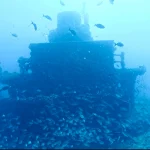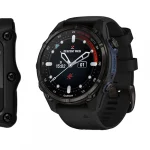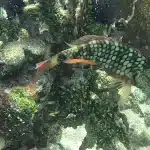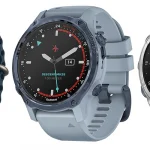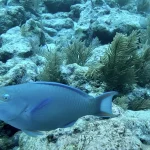Table of Contents
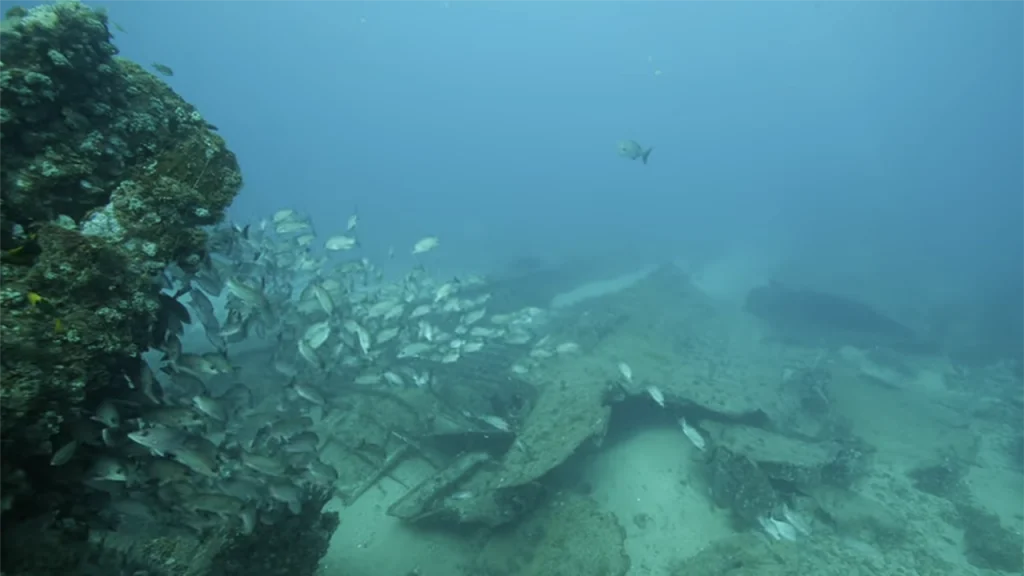
The combination of rich marine life, unique wreck structure, and the historical context makes the St. Jacques a distinctive and appealing destination for scuba divers.
Article at a Glance
- Historical Background: Originally built in 1955 as the Klaus Block, the St. Jacques has a storied history, including involvement in drug smuggling before being seized and sunk as an artificial reef in 2002.
- Unique Features: The wreck features distinct sections, including a surreal bow and stern that list at angles due to hurricane damage, along with remnants of its machinery like boilers and a drive shaft.
- Marine Life: The St. Jacques wreck is home to diverse marine life, including sea turtles, sharks, and goliath grouper, making it an exciting site for underwater exploration.
- Diving Conditions: Located at a depth of approximately 90 feet, the site is suitable for advanced divers due to potential strong currents and the need for proper diving experience.
- Safety Measures: Divers are encouraged to follow safety protocols, including diving with a buddy, conducting thorough equipment checks, and being aware of current conditions.
- Dive Shops: Several local dive shops, such as Pura Vida Divers, The Scuba Club, and Neptune Dive and Ski, offer guided trips to the St. Jacques wreck, ensuring a safe and enjoyable experience.
- Adventure Awaits: The combination of the wreck’s history, unique underwater features, and rich marine life makes the St. Jacques a must-visit destination for diving enthusiasts in Florida.
St. Jacques Wreck Location Coordinates and Depth
Depth
The wreck rests at a depth of approximately 90 feet (about 27 meters) underwater. It is situated off Palm Beach, Florida, and is part of the Governor’s River Walk Reef, which is known for its diverse marine life and is a popular dive site.
Location Coordinates
The St. Jacques wreck is located at the following coordinates:
- Latitude: 26° 45.115′ N
- Longitude: 80° 00.615′ W
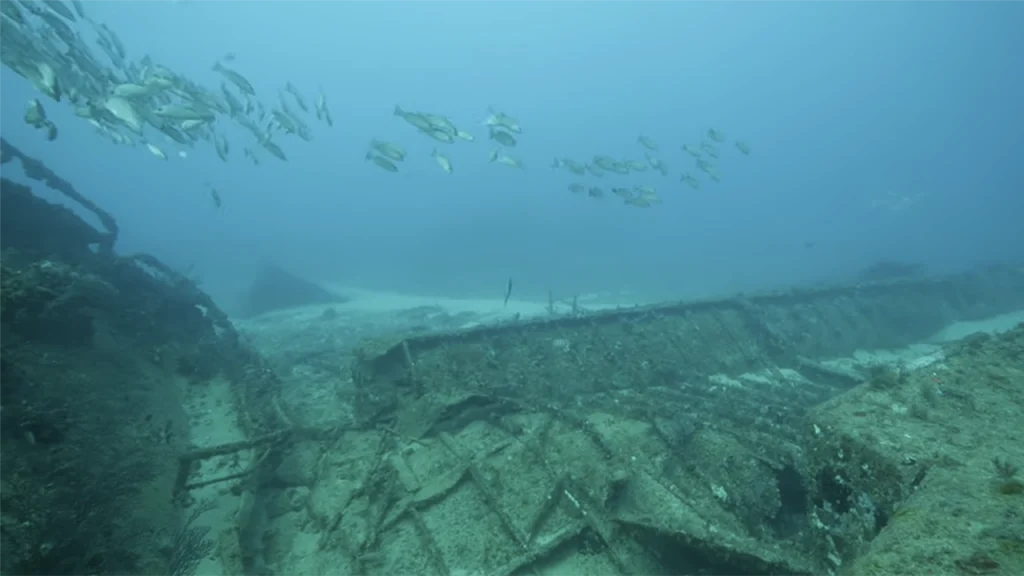
What to Scuba Divers Say About This Wreck
- Diving Experience: Divers describe the St. Jacques as a rewarding dive site, offering a surreal experience due to its current condition. The wreck has been significantly altered by natural forces since it was scuttled in 2002. It now lies in two main sections, the bow and stern, which are separated and tilted at various angles, creating an intriguing underwater landscape.
- Visibility and Orientation: Divers have noted some challenges with orientation due to the movement of the buoy marking the wreck. This has led to confusion about the exact location of different parts of the wreck, but many divers find that studying the wreck’s layout beforehand helps with navigation during the dive.
- Marine Life: The site is known for its rich marine biodiversity. Divers frequently encounter a variety of marine species, including sea turtles, sharks, and goliath groupers, which enhance the diving experience. The vibrant coral growth on the wreck adds to its visual appeal, making it a colorful dive site.
- Wreck Features: The wreck contains several interesting structural remnants, such as the anchor, winches, and sections of the engine. Divers have reported seeing the iron propeller and remnants of the gun mount, which contribute to the wreck’s historical significance and allure for divers interested in maritime archaeology.
What Kind of Marine Life Can Be Found on The Wreck
- Sea Turtles: These majestic creatures are often spotted swimming around the wreck, adding to the allure of the dive.
- Sharks: Various shark species frequent the area, providing an exciting experience for divers who enjoy observing these apex predators in their natural habitat.
- Goliath Groupers: These large fish are frequently seen around the wreck, known for their impressive size and curiosity towards divers.
Key Information
| Category | Details |
|---|---|
| Historical Significance | Constructed in 1955 as the Klaus Block; later seized for drug trafficking and scuttled in 2002 to create an artificial reef. |
| Notable Characteristics | Features a visually striking bow and stern that are tilted, along with remnants of its original machinery, such as boilers and a drive shaft. |
| Biodiversity | The wreck serves as a habitat for various marine species, including sea turtles, sharks, and goliath grouper. |
| Diving Environment | Positioned at a depth of about 90 feet, this site is recommended for experienced divers due to the potential for strong currents. |
| Safety Protocols | Divers should adhere to safety guidelines, including the buddy system, thorough equipment checks, and awareness of current conditions. |
| Local Dive Operators | Dive shops like Pura Vida Divers, The Scuba Club, and Neptune Dive and Ski provide organized trips to explore the wreck. |
| Diving Experience | The St. Jacques wreck offers a unique underwater adventure, combining historical intrigue with vibrant marine life and distinctive features. |
What Makes St. Jacques a Unique Diving Experience
- Artificial Reef Creation: The wreck was intentionally sunk as part of Palm Beach County’s Artificial Reef Program, contributing to the development of a vibrant underwater ecosystem. This initiative aimed to enhance marine biodiversity and provide new habitats for various marine species.
- Diverse Marine Life: The wreck has become a habitat for a rich array of marine life, including sea turtles, sharks, and goliath groupers. Divers often report encounters with these species, which thrive around the wreck due to the abundant food sources and shelter it provides.
- Wreck Structure and Condition: The St. Jacques lies at approximately 90 feet deep and has been affected by natural forces, leading to its current fragmented state. The wreck is split into sections, making it visually interesting and providing divers with the opportunity to explore different parts of the structure, including the bow and stern, which are adorned with colorful corals and sponges.
- Drift Diving Experience: The site is part of a drift diving corridor, allowing divers to experience the thrill of being carried along by the currents while exploring the wreck. This dynamic environment adds an element of adventure and exploration to the dive.
- Historical Context: As a former freighter that was repurposed as an artificial reef, the St. Jacques carries historical significance. Divers often appreciate the story behind the wreck and its transformation into a marine habitat.
What is The Full History of This Wreck
Construction and Service
- Built: The St. Jacques was constructed in the early 20th century, specifically in 1948, as a French freighter. It was designed for cargo transport, primarily operating in European waters.
- Operational Period: The ship served for several decades, navigating various trade routes and contributing to maritime commerce.
Wrecking and Scuttling
- Decommissioning: After years of service, the St. Jacques was decommissioned. The decision was made to scuttle the vessel rather than scrap it, aligning with efforts to enhance marine habitats.
- Scuttling: On March 15, 2002, the St. Jacques was intentionally sunk off the coast of Palm Beach, Florida, as part of an artificial reef program. This initiative aimed to promote marine life and provide divers with a new site to explore.
Current State and Diving Experience
- Wreck Condition: The wreck lies at approximately 90 feet (27 meters) deep and has been significantly altered by natural forces over the years. It is currently divided into two main sections—the bow and stern—both of which provide unique diving opportunities.
- Marine Habitat: Since its sinking, the St. Jacques has become a thriving artificial reef, attracting a diverse range of marine life, including sea turtles, sharks, and various fish species. This transformation has made it a popular site for scuba divers seeking to experience underwater biodiversity.
Legacy
- Diving Attraction: Today, the St. Jacques is recognized not only for its historical significance but also for its role in supporting marine ecosystems. It serves as a testament to the benefits of artificial reefs in enhancing underwater habitats and promoting recreational diving.
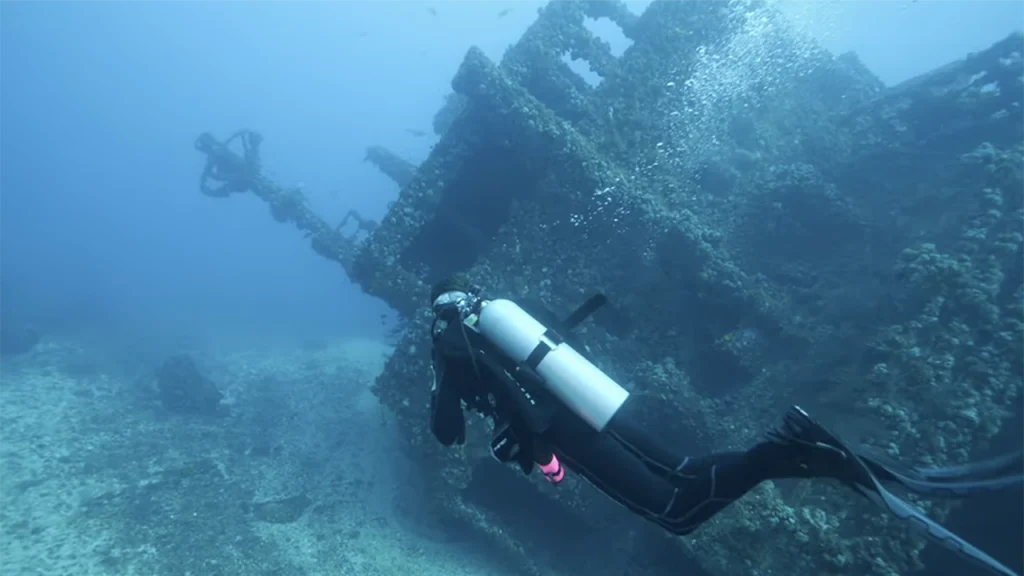
What Historical Features Can Still Be Identified on Wreck
- Bow and Stern Sections: The wreck is divided into two main parts—the bow and the stern—both of which lie on their starboard sides, creating an interesting layout for divers to navigate.
- Anchor and Winch: The bow section contains the starboard anchor, which rests snugly in its hawse-pipe, along with an anchor-winch located nearby. The winch is upside-down beneath its mounting plate on the seabed, providing insight into the ship’s operational history.
- Gun Mounts: The wreck features two gun mounts; one is located at the bow and the other at the stern. The forward gun mount rests on its side, partially buried, while the stern gun remains attached to its mounting plate.
- Condenser Tubing: A mass of condenser tubing is visible near the engine, which adds a unique aspect to the wreck’s engineering history. This feature is relatively rare and provides divers with a glimpse into the ship’s machinery.
- Propeller and Shaft: The iron propeller is still attached to the shaft, with its blades partially buried in the sand. The propeller’s condition suggests it may be slightly bent, adding to the wreck’s character.
- Rudder Post: Although the rudder itself is missing, the rudder post remains intact, complete with a recognizable steering quadrant at the top, indicating the ship’s navigational capabilities.
- Engine Components: Divers can find remnants of the ship’s engine, including the crankshaft and low-pressure piston, which are significant for understanding the vessel’s mechanical design.
What Safety Measures Are in Place for Divers Visiting St. Jacques
Pre-Dive Safety Checks
- Health Assessment: Divers should ensure they are physically fit to dive. A self-assessment of health is recommended, and any concerns should be discussed with a healthcare professional.
- Equipment Check: Before diving, divers must thoroughly inspect their gear, including tanks, regulators, and buoyancy control devices, to ensure everything is in proper working order.
Dive Planning
- Buddy System: Always dive with a buddy. Conduct a buddy check to confirm that both divers have the necessary equipment and understand the dive plan.
- Weather and Conditions: Check the weather, tides, and sea conditions before diving. This helps in planning the dive and avoiding hazardous situations.
During the Dive
- Surface Marker Buoy (SMB): Divers should carry a surface marker buoy to enhance visibility to surface vessels, especially in busy areas.
- Communication Devices: Consider carrying a personal locator beacon (PLB) or similar device in a waterproof canister to call for help if needed.
Post-Dive Safety
- Decompression Procedures: Follow proper decompression procedures to avoid decompression sickness. Ascend slowly and make safety stops as required.
- Hydration and Rest: After diving, ensure to hydrate and rest adequately to help the body recover.
Additional Considerations
- Dive Training: Divers should have appropriate training and certifications for wreck diving, as it can present unique challenges compared to other types of diving.
- Insurance: It is advisable to have travel and dive insurance to cover any potential incidents while diving.
Dive Shops That Provide Diving Trips to This Shipwreck
- Shark Addicts
- Rating: 4.9
- Address: 805 US-1, Jupiter, FL 33477
- Website: Shark Addicts
- Pura Vida Divers
- Rating: 4.9
- Address: 2513 Beach Ct, Riviera Beach, FL 33404
- Website: Pura Vida Divers
- Sea Experience
- Rating: 4.6
- Address: 801 Seabreeze Blvd, Fort Lauderdale, FL 33316
- Website: Sea Experience
- East Coast Wreck Diving
- Rating: 4.0
- Address: 11 Hudson Ave, Freeport, NY 11520
- Website: East Coast Wreck Diving

